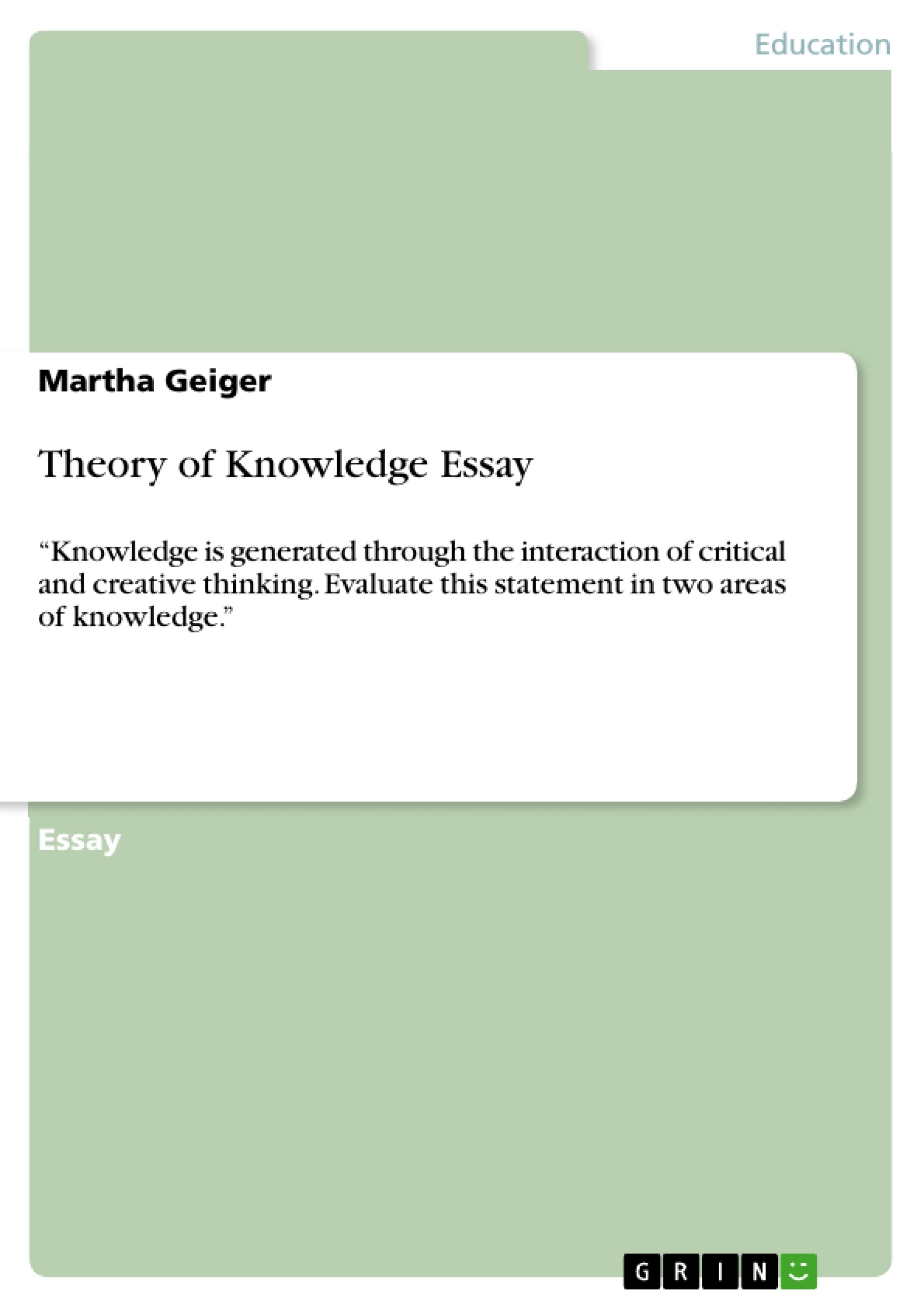Knowledge, which is true belief based on strong, justifiable evidence, being generated is knowledge created or acquired; something is being learned. There are different ways of learning, which generate knowledge differently. Two of these are critical and creative thinking, which often work together when learning. Critical thinking focuses on questioning, evaluating and analyzing assumptions, suggesting that critical thinking holds an element of creative thinking, which involves coming up with a new idea by combining ideas that haven’t been combined before, because originality and flexibility are required to successfully question, analyze and evaluate. These procedures rely heavily on all the Ways of Knowing (WOKs). Reason is needed to question assumptions by inducing a larger truth from the assumptions and testing the truth’s validity. Language is necessary to pick up on bias in text, which affects the evaluation of assumptions. Sense perception and emotion are often needed to follow a ‘gut instinct’ about the validity of assumptions. Overall, critical and creative thinking need to interact to enable the most effective way of learning. This can be shown with examples from the natural sciences and the language arts as Areas of Knowledge. More specifically, examples from my IB physics class and my IB A1 German class can be analyzed. Nevertheless, my arguments also apply in biology, chemistry and other A1 literature courses.
Inhaltsverzeichnis (Table of Contents)
- Knowledge is Generated through the Interaction of Critical and Creative Thinking
- Critical Thinking in Physics
- Critical Thinking vs. Creativity in Physics
- Public Knowledge vs. Individual Knowledge in Physics
- Cultural Influences on Critical Thinking in Physics
- Critical and Creative Thinking in Language Arts
- Author's Intention and Creativity
- Student's Perspective and Interpretation
Zielsetzung und Themenschwerpunkte (Objectives and Key Themes)
This essay explores the role of critical and creative thinking in generating knowledge, focusing on the areas of natural sciences (specifically, physics) and language arts. The author analyzes how these two modes of thinking interact to produce understanding in both academic and professional contexts. Key themes explored in the essay include:- The interplay of critical and creative thinking in generating knowledge
- The influence of different communities of knowers on the use of critical and creative thinking
- The role of cultural perspectives in shaping knowledge generation
- The significance of individual versus public knowledge
- The relationship between art and science in knowledge generation
Zusammenfassung der Kapitel (Chapter Summaries)
The essay begins by defining knowledge as true belief based on justified evidence and emphasizing the role of critical and creative thinking in its acquisition. The author then provides a detailed analysis of critical thinking in physics, illustrating its significance in the experimental process and the interpretation of results. Through examples from her own experience in IB Physics class, the author demonstrates how critical thinking, along with sense perception, reason, and language, helps to prove theories and understand physical phenomena. The author also discusses how creativity plays a vital role in physics, citing Albert Einstein's General Theory of Relativity as an example. Here, she highlights Einstein's use of reason, creativity, and sense perception in formulating his theory, emphasizing the interplay of these modes of thinking in scientific discovery.
The essay further explores the interaction of critical and creative thinking in language arts, focusing on the works of Friedrich Dürrenmatt and Arthur Miller. The author argues that authors use both critical and creative thinking to convey their intentions and themes in their writing. Dürrenmatt's play "Die Physiker" and Miller's "Death of a Salesman" are examined as examples of how authors use critical and creative thinking to explore social and philosophical themes, challenge established ideas, and generate new knowledge.
The author concludes by reflecting on the implications of her analysis, suggesting that knowledge may not always be generated but rather discovered. Nevertheless, she asserts that the interaction of critical and creative thinking remains crucial for understanding existing knowledge in both physics and language arts.
Schlüsselwörter (Keywords)
This essay focuses on the role of critical and creative thinking in knowledge generation, exploring the areas of natural sciences, specifically physics, and language arts. The keywords that encapsulate the essay's central themes include: knowledge generation, critical thinking, creative thinking, sense perception, reason, language, physics, language arts, communities of knowers, public knowledge, individual knowledge, cultural perspectives, and author's intention.- Quote paper
- Martha Geiger (Author), 2012, Theory of Knowledge Essay, Munich, GRIN Verlag, https://www.grin.com/document/208041



